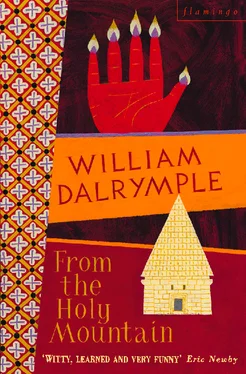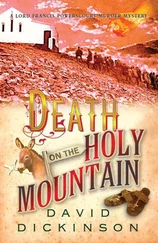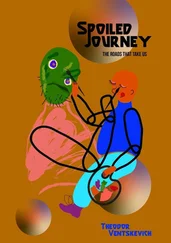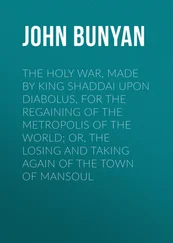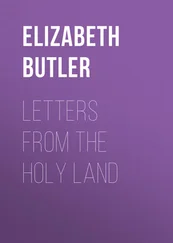Stephanos sent an envoy hundreds of miles south from the Caucasus to Mesopotamia to locate one of these last Diatessaron manuscripts. When eventually one was found, it was agreed that a local scribe, a Syrian Orthodox priest, should copy out the text. It was this copy that was taken to Rome by Stephanos. According to a colophon in the manuscript, the scribe was a native of Hasankeif, a town on the Tigris, a few miles south of Diyarbakir near Deir el-Zaferan. The overwhelming likelihood is that the original manuscript from which the papal copy was made came from the monastic library of Deir el-Zaferan.
In the event the Catholicos’s embassy to the West was a fiasco. Stephanos never saw the Pope, and within a century his people, like the Byzantines before them, had been conquered and their land divided between the Persians and the Turks. The copy of Tatian’s Diatessaron was never presented to the Holy Father, only getting as far as the office of his secretary. Later it found its way from the Vatican to the Bibliotheca Medicea Laurentiana in Florence.
Four hundred years later, in the winter of 1967, the Danish art historian Carl Nordenfalk was at work in the Laurentian Library when he came across the manuscript and began to browse through its pages. Suddenly he found himself staring at a set of illustrations that made him stop dead in his tracks. Nordenfalk was a specialist in Celtic manuscripts, and he saw immediately that these illustrations in the Diatessaron were iconographically identical to those in the first of the great illuminated Celtic gospel books, the Book of Durrow. The Diatessaron pictures also had a close relationship with a slightly later Celtic manuscript, the Gospels of St Willibrord.
In the Book of Durrow each gospel is preceded by a whole-page illustration showing the sacred symbol of the Evangelist who wrote the book (in this early case, a man to represent St Matthew, an eagle for St Mark, a bull for St Luke and a lion for St John). Most scholars would accept that these paintings in the Book of Durrow, probably executed in the last years of the sixth century A.D., are the first figurative paintings in British art.
Although the style of the Diatessaron and the two Celtic Gospel Books are very different – as you would expect from two manuscripts drawn centuries apart – the poses of the symbols, the angles at which they were drawn and the attitudes they strike are identical with each other, and totally different to anything else in Christian iconography. Moreover, both sets of manuscripts open with nearly identical full-page illuminations showing a double-armed cross embedded in a weave of intricate interlace. The same pattern also found its way onto a Pictish cross-slab, the Rosemarkie Stone, which still lies on the Beauly Firth, a few miles north-east of Inverness.
It took several months of intense study before Nordenfalk felt confident that he had worked out how an obscure mid-sixteenth-century copy of a manuscript from eastern Turkey could have such a close relationship with a pair of Celtic gospel books which were probably illustrated on the isle of Iona, off the distant west coast of Scotland, some eight centuries earlier.
Nordenfalk’s thesis was that the illustrations of the Book of Durrow were based on an earlier copy of the Diatessaron which had somehow reached Iona from the Levant in the early Middle Ages. He even had a suspect for the carrier of the manuscript from east to west.
In his History , the Venerable Bede records that one winter night at the very end of the seventh century, a Frankish galley on its way back from the Holy Land was wrecked off the coast of Iona; a storm had blown the ship around the north coast of Scotland until it came to rest, as fate would have it, on the shores below the island’s abbey church. Bede records that on board the vessel was a Gaulish nobleman named Arculph, who dictated a description of the holy places of the Levant to Adamnan, Iona’s Abbot. (A copy of the manuscript of Arculph’s descriptions, entitled De Locis Sanctis , later reached Bede’s own scriptorium in Jarrow and became a source of much future Anglo-Saxon comment – both factual and legendary – on the eastern coast of the Mediterranean from Constantinople to Alexandria.) ‘It is extremely tempting to assume,’ wrote Nordenfalk, ‘that [a copy of] the illustrated Diatessaron was among the books in Arculph’s baggage.’
The realistic portraits in such an Eastern manuscript would have come as a revelation to Celtic monks familiar only with the geometric whorls and trumpet spirals of pagan Celtic art. Nordenfalk proposed, not unreasonably, that the arrival of the Diatessaron was the spark which ignited the almost miraculous blaze of Celtic book illumination during the seventh and eighth centuries, a process which culminated in such masterpieces as the Lindisfarne Gospels and the Book of Kells.
In his excitement Nordenfalk went on to make several other, much wilder claims for the Florence Diatessaron which were later questioned by rival academics. But the core of his thesis has never been successfully challenged. There can be no doubt that the miniatures and interlace patterns of the Florence Diatessaron , a manuscript originally illuminated in a monastic scriptorium somewhere in the Tur Abdin, comes from the same family of manuscripts as those contained within the Book of Durrow and the Gospels of St Willibrord.
Somehow, perhaps in the baggage of a shipwrecked Frankish nobleman, a set of pictures probably originally drawn in a monastery in eastern Turkey came to form the seed from which sprung the first Christian figurative paintings ever drawn in the British Isles. It is a considerable cultural debt, and one that is little known, and certainly unrepaid.
This evening, an hour before vespers, the monks, the novices and the schoolchildren got out the ladders and began the harvest of Mar Gabriel’s pistachio trees.
The orchards stood on a ripple of narrow terraces sloping down from the front gate of the monastery. On the lower terraces the grapes were growing black with sweetness and the sheaths of the almonds were near to bursting; but the pistachio trees were so ripe that they would clearly rot if they were not picked that week. So the boys swarmed around the pistachio trees, trying to clamber up into the boughs without using step-ladders, pulling themselves up and swinging over to the ends of the branches. There hung the clusters of green buds which enclosed the soft white nuts. The boys plucked at the trees and threw down the buds to the novices who stood below, holding tin buckets.
As they scrabbled around, the harvesters were chatting to each other in Turoyo, the modern dialect of Aramaic still spoken as the first language of the Suriani. It had a completely different sound to Turkish or Kurdish or any other Anatolian tongue I had ever heard, sounding instead far closer to the guttural elisions of Hebrew or Arabic. Jesus must have sounded much like this when, as a boy, he spoke Aramaic in the carpenter’s shop at home or chatted to his friends beside the Sea of Galilee.
After half an hour plucking at the buds, I took a rest and looked on from the edge of the terrace. Afrem came over to join me. He pointed out the burned earth of the slopes of the Izlo Mountains ahead of us, dramatically lit up now in the last light of the sun. ‘You see over there?’ he said. ‘Those were all olive groves. Now they have been burned. It will be years before any trees that are replanted will be ready to harvest.’
‘You think there will be a chance to replant them?’
‘We have to hope,’ he said. ‘Without hope we cannot live.’
Yacoub came up and joined us. He put down his bucketful of pistachio buds and sat with his legs dangling over the edge of the terrace.
Читать дальше
